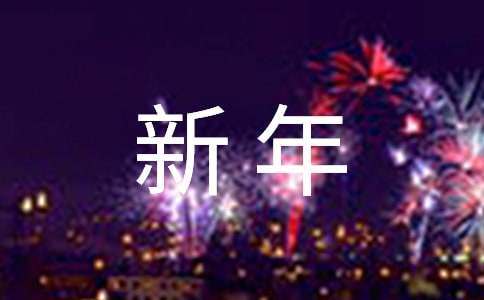- 相关推荐
中国新年传说英文版
关于我国的新年,历史上有许多有趣的传说,下面是中国新年传说,英文版的,希望对大家有帮助。

According to the legend, there was a man-eating wild monster called "Nian" with an extremely large mouth, capable of swallowing several people in a single bite. This beast appeared in a country village towards the end of winter . When there was nothing to eat, it would visit the villages and attack and eat whatever it could find. The villagers would live in terror over the winter.
The next year it returned and the same thing happened. The monster seemed too strong to be defeated. So all the villagers would take their old and young deep into the mountains to hide from Nian.
One day, a wise old man passed through the village and told an old woman, "I will teach you how to scare Nian away!"
That evening when Nian arrived at the village, he saw that all the houses were dark except the house in which an old woman lived. Nian approached the house, licking his lips in anticipation. Suddenly, the deafening noise of firecrackers sounded endlessly.
The monster was startled and jumped. Suddenly he realized that the house was covered in red paper. This scared him even more and it ran off into the mountains. When the villagers returned they saw that the old woman was unharmed! People later learned that "Nian" was afraid of loud noises and the color red.The villagers came together and agreed that when it was time for Nian's annual visit towards the end of winter they would start a fire in front of every door and not go to sleep but rather make noise.
The following year, the villagers were ready for it. They set off firecrackers, lit all their lamps and decorated their houses in red. They pasted red paper on the doors, wore red clothing, hung up red lanterns. They made loud music, played the gong and drums and they danced and burned the fireworks whenever Nian was about to arrive, to scare away the beast.
Nian had not come down the mountain to cause any trouble thereafter.
This eventually becomes a tradition of China and leads to the celebration for another year of safe life. Chinese people celebrate in remembrance of this legend and still continues till today!
CHINESE NEW YEAR
Chinese New Year starts with the New Moon on the first day of the new year and ends on the full moon 15 days later. The 15th day of the new year is called the Lantern Festival, which is celebrated at night with lantern displays and children carrying lanterns in a parade.
The Chinese calendar is based on a combination of lunar and solar movements. The lunar cycle is about 29.5 days. In order to "catch up" with the solar calendar the Chinese an extra month once every few years (seven years out of a 19-yearcycle). This is the same as adding an extra day on leap year. This is why, according to the solar calendar, the Chinese New Year falls on a different date each year.
New Year's Eve and New Year's Day are celebrated as a family affair, a time of reunion and thanksgiving. The celebration was traditionally highlighted with a religious ceremony given in honor of Heaven and Earth, the gods of the household and the family ancestors.
The sacrifice to the ancestors, the most vital of all the rituals, united the living members with those who had passed away. Departed relatives are remembered with great respect because they were responsible for laying the foundations for the fortune and glory of the family.
The presence of the ancestors is acknowledged on New Year's Eve with a dinner arranged for them at the family banquet table. The spirits of the ancestors, together with the living, celebrate the onset of the New Year as one great community. The communal feast called "surrounding the stove" or weilu. It symbolizes family unity and honors the past and present generations.
【中国新年传说英文版】相关文章:
中国元旦的传说资料07-05
中国元旦的传说作文07-03
嫦娥奔月的传说英文版07-04
新年的传说英语07-13
关于新年的传说07-13
中秋节三大传说故事英文版10-10
中国母亲节的传说07-04
英文版新年的来历07-03
新年的来历英文版07-03
与中国景点相关的中国民间传说07-03






